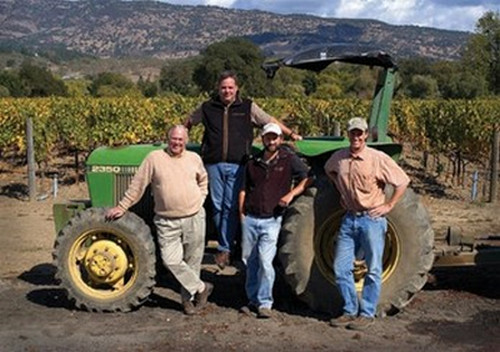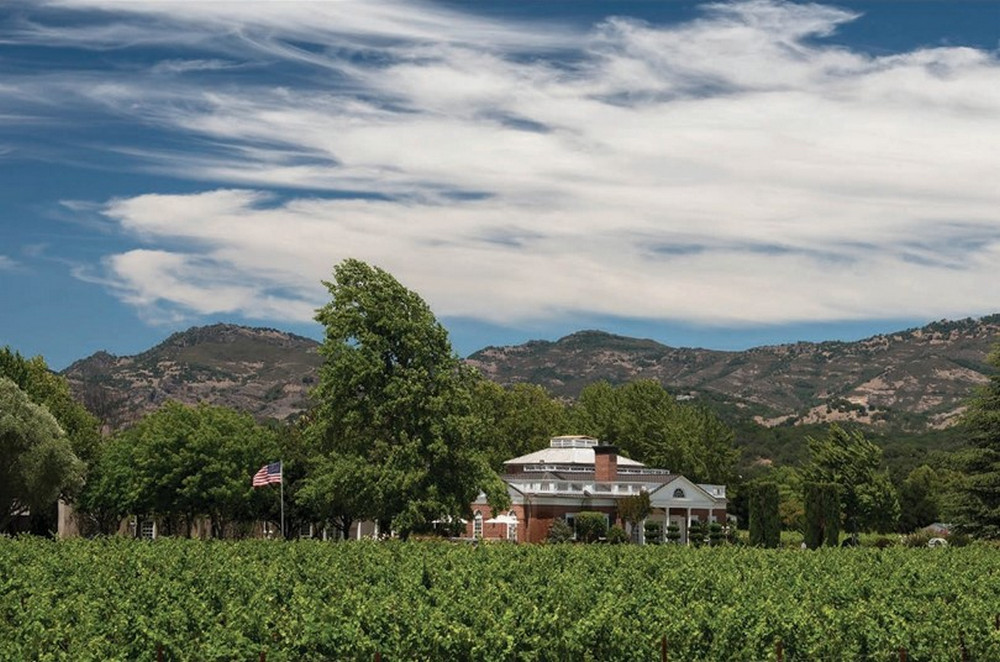Celebrating 50 Years of Excellence
When Jay Corley came to the Napa Valley fifty years ago, he came to buy land to grow an estate vineyard with an eye to an eventual winery. He had not worked in the wine industry before, and Napa Valley was not what it is today, so it was not a foregone conclusion that a Napa winery would be a successful venture. A new winery was more than likely to fail, even with André Tchelistcheff as a consultant.
“In the 1970s, it was a peculiar thing for a Los Angeles businessman to get into the wine industry without having family in the business already,” Jay’s son Stephen said. “Dad challenged himself by starting a vineyard BPTFP.” BPTFP – “Before the Paris Tasting and the French Paradox” – is Corley’s way of describing Napa Valley before the seismic shift that occurred in Napa Valley in the 70s and 80s when two significant events catapulted Napa Valley wine and the wine industry forward.
Jay Corley was a grower in the 70s when the Paris Tasting (or “Judgment of Paris”) took place. During a blind tasting in Paris, a panel of French judges selected an American Chardonnay as the grand winner over some of the most prestigious French wines. That was when everything changed for American wine –Napa was already the domestic leader in winemaking, and the victory pumped new energy into the California wine industry, particularly in the Napa Valley.
As Napa Valley was quickly expanding, another event shook the wine world. The phrase “French Paradox” was coined in the late 80s based on a scientific study of French patterns of low rates of cardio- vascular disease despite high saturated fat consumption. The research and sub- sequent opinion drew a link to red wine and pointed to the wine’s beneficial health effects – and overnight, wine sales went through the roof.
These two events are historical markers in the genesis of Napa Valley, and the vintners who were already on board benefited immensely. “They raised the tide for all boats in the Napa Valley,” said Stephen.
Jay’s prescient decision to start a vineyard and winery BPTFP set it in good stead to grow for decades. When Jay passed away in 2016, only four years before the winery’s 50th year, his family vowed to take the winery through the second half of its first century. While several original Napa Valley family wineries still exist, it is rare to find one where members of the actual family still run the day-to-day business. But the Corley family – a seven sibling bunch – keeps it real. Today, Jay’s sons Kevin, Chris, and Stephen manage the business: Kevin is President and Winegrower, Chris is the Winemaker, and Stephen is Director of Sales and Marketing.
Stephen said, “My brothers and I have the luxury of executing a vision that’s already in place. We can spend our time trying to make it better rather than figuring out who we are. What we do is an extension of what Dad did originally.”

The name Monticello was significant for Jay Corley. It became the name of one of their wine brands, it is an emblem on the wine bottles, and it is the name of the estate where the family runs the business and greets guests for tastings. The building and name reference one of America’s founding fathers, Thomas Jefferson, known as a serious food and wine enthusiast. The Corley family’s founding father, Jay, was fond of Jefferson and the Virginia estate, Monticello, which means “small mountain.” Jefferson built his home on a hill and then named it Monticello. In homage, Jay built Corley’s Monticello on an eight-foot rise to fit its name. Similar to the original Monticello, the Corley building’s architecture is Italian Palladian, and the landscaping follows the Monticello model – there is always something blooming throughout the year.
But the similarities do not end there. There is history in Corley’s Monticello just as there is history in Jefferson’s. The gleaming redwood boards of the Corley estate that line the private wine salon beneath the tasting room came from the large wine- fermentation tanks at Sunny St. Helena Winery, where Robert Mondavi himself played as a child. When the Mondavis put them up for sale, Jay bought and re-milled them, and used them to panel the Jefferson House Reserve Room and Library, as an homage to this great Napa Valley winemaking pioneer.
History came full circle when Mondavi drove down the road to Monticello for a visit. As Jay later recounted to his children, “When Bob Mondavi came down into the Reserve Room, he told me, ‘Jay, I stood inside these tanks as a child. And here I am inside these tanks again.”

As another way to hold onto the estate’s history, the Corley family has reserved bottles from every vintage of Monticello Vineyards and Corley wine they have produced since 1980. Monticello Vineyards wines are the first estate wines. “We think of them as the classic varieties, classically styled. The Corley wines are Reserve blends, single vineyard and vineyard block and clone wines made to stand alongside the best wines in the world,” said Stephen.
There is an overwhelming sense of gratitude in the family today. Jay Corley brought the Corley family and the family business through the first 50 years. While taking pause to reflect on the past and celebrate the moment, the next generation of the Corley family is well positioned to lead them through the rest of their first century. Stephen explained that as their flagship wines from the 2017 harvest will release in 2020 and wines from the 2020 harvest will release in 2023, they are celebrating their 50th from 2017-2023. The Corley family invites guests to raise a glass to help them celebrate their past and future by visiting the estate or attending an upcoming event at Monticello.
FOR MORE INFORMATION
www.CorleyFamilyNapaValley.com
Article By: Layne Randolph

